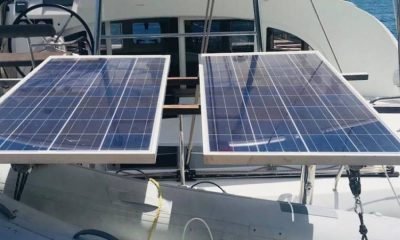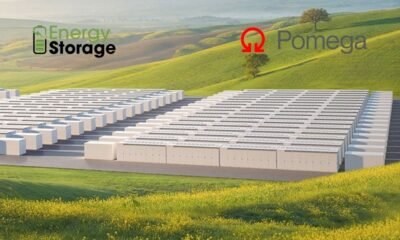Control Systems Et Software
HOMER responds to the rapidly growing solar+storage market with Grid software

HOMER Energy’s newest software product, HOMER Grid, is a tool for optimizing the value of behind-the-meter, distributed generation systems while reducing demand charges. This product from HOMER Energy is a response to the rapidly growing solar+storage market, and the rise in demand charges across the United States and other countries.
“Demand charges now make up about 25% of overall utility sales to commercial and industrial customers nationally, and for individual companies, they can represent over 50% of an electricity bill,” said Peter Lilienthal, HOMER Energy founder and CEO. “We continually hear from clients who say they don’t understand how demand charges are calculated and what they can do to reduce them. That’s why we designed HOMER Grid.”
Built from the same code base as HOMER Pro, the global standard for designing distributed generation systems, and reusing many of its powerful optimization and visualization tools, HOMER Grid simplifies decisions about distributed energy resource investments. It helps engineers and business development teams understand the value of demand charge reduction, energy arbitrage, and self-consumption so they can determine the best mix of resources for the least-cost solution, and design a system with the best rate of return.
“Commercial electricity customers are facing complex and potentially confusing choices,” Lilienthal said. “Solar+storage and other distributed energy technologies can work together to have an impact on demand charges, and can dramatically increase the potential for commercial users to reduce their peak demand and save money. However, there are a lot of factors that go into designing best system for your needs. It’s a complex and nuanced process, and it’s important to get it right. That’s where HOMER Grid comes in.”
While solar-plus-storage systems have the ability to reduce energy consumption and demand charges, other behind-the-meter technologies, such as combined heat and power, or on-site generators powered by natural gas, can be just as effective for certain systems. HOMER Grid is the first tool for this market that considers all of these technologies, providing users with the best potential mix of resources for the least-cost solution.
Incorporating the Genability utility tariff database, and also allowing customers to build their own tariffs, HOMER Grid will take inputs on customer load profile types and utility tariffs, and determine optimally sized hybrid renewable energy systems. Then it will run simulations for thousands of different types of system configurations for every hour of the year, and rank the results by financial performance. With options for solar PV, storage, generators, combined heat and power, and more, HOMER Grid allows users to tailor their design to the exact needs of a project.

Control Systems Et Software
Software strives to simplify solar project siting

While solar generation technology has been around for decades, it is only in recent years that economic and societal factors have aligned to trigger exponential growth. In 2016, installations nearly doubled the amount in 2015 and exceeded the combined installations from 2000 through 2012, according to GTM Research.
With so much growth in a relatively short period of time, certain historical development inefficiencies still exist. One of these difficulties is siting, which is the process of finding ideal land and grid interconnections for new development.
What makes for a good site
Given that the renewable energy industry is relatively young, there still isn’t a singular, detailed best practice for siting. However, there are many consistent high-level activities that most developers complete.
For land, one of the main criteria is land parcel acreage. Depending on the size of the proposed solar farm, there are acreage requirements that must be met in order for a site to be feasible.
While it may seem reasonable to assume that a solar array could be built anywhere that there is space, this is not the case. Prospective land parcels must meet a variety of environmental criteria in order to be suitable. For example, here are a few of the common requirements:
- Avoid floodways and significant flood risk zones
- Not on wetlands
- Not on native grassland
- Proper zoning requirements
- Minimal topographical incline
Of course, the most important environmental factor is the availability of the sun. There must be enough output from the system to make the site financially viable.
It is also necessary to select a substation for interconnection. Substations must meet voltage constraints, be within several miles of the development site and have interconnection availability for new linkages. If any of these constraints aren’t met, it can make a project infeasible or significantly increase its cost.
An inefficient history
Clearly, lots of information is needed to determine site viability, but this data is, at best, disparate and, at worst, non-existent, which creates significant inefficiencies.
During the early years of the modern renewable development industry, siting was almost wholly manual. It often required analysts to literally drive around regions of interest following power lines to find substations. From there, they’d dig into county property records looking for nearby land, and environmental data availability was minimal.
Luckily, siting has become easier with the utilization of software, but there is still significant opportunity for improvement. The advancement of tools such as Google Earth, GIS data layers and other mapping technologies allow developers to more rapidly analyze overarching environmental constraints in regions of interest.
However, even with better data availability, these resources are scattered across a wide variety of systems, applications and providers. Developers spend significant time simply tracking down datasets for regions of interest. Additionally, certain key pieces of information, such as substation interconnection queues and capacity, are extremely difficult to track down as they require lengthy interactions with the owning utilities, which can slow project timelines.
While some datasets are difficult to attain, others, such as the United States distribution network, simply aren’t publicly available. This example is particularly detrimental for distributed generation developers as it is necessary to understand local distribution networks to initiate these projects. Since this data isn’t widely available, these companies are forced to utilize one-off, manual processes to obtain the information. Once again, this takes manual effort that slows projects and increases their costs.
How siting could be improved
Siting processes could be significantly improved with increased accessibility to digitized datasets. Easier, open access to substation interconnection queues and capacities coupled with national rather than regional environmental overlays would provide significant efficiencies to the industry. While many developers currently consider their data accessibility to be a competitive advantage, democratizing this information would help the industry as a whole take dramatic steps forward.
Unfortunately, this would take buy-in from utilities, governmental entities and data providers, making it unrealistic in the immediate term. As such, software companies are sprouting up to consolidate the vast amounts of currently disparate data. However, this industry is still young and fragmented.
Most of these applications map the transmission grid and substations. Sometimes, they also include environmental overlays. Each tool has its own set of deficiencies such as lacking parcel data, automated filtering, interconnection queues or substation capacity. The industry lacks a fully automated, end-to-end application. However, companies such as Kevala Analytics, Anderson Optimization and PennWell are making progress to meet this need.
Without these tools, developers must manually locate necessary data sources. This information is spread across many different websites and data providers, as well as government organizations and utilities. Manually acquiring and consolidating this information requires significant human capital investment; however, these supporting software tools automate this entire process as they come loaded with relevant, consolidated data.
After consolidation, there are several feasibility tasks that developers must complete, such as interconnection queue analysis, land parcel identification and landowner outreach. Each tool has unique, additional features that also save developers time in these later stage processes. Ultimately, all supporting software products provide significant project automation benefits, which can significantly reduce project lead times and costs.
Moving forward
Ultimately, the renewable energy industry is experiencing unprecedented expansion, but inefficiencies driven by outdated processes are holding it back from faster growth. As the supply of obvious development opportunities decreases, siting methodologies need to be optimized to maintain the industry’s current growth trends.
Luckily, there is a budding software industry to support this modernization, but these tools are still a work in progress. As these tools mature, they will be a key enabler of continued renewable integration. Until all pertinent data, such as distribution network and interconnection queue information, is made widely available, it will be difficult to create a truly automated end-to-end siting system. Luckily, industry stakeholders recognize this issue and are dedicating resources to improving it, which bodes well for the long-term outlook of the solar industry.
-

 Solar Panels7 years ago
Solar Panels7 years agoAre Tesla solar roof tiles worth it?
-

 Genel7 years ago
Genel7 years agoMaldives luxury resort is powered entirely by solar panels
-

 Solar Technologies6 years ago
Solar Technologies6 years agoGOODWE PARTNERSHIP WITH GE
-

 Solar Technologies5 years ago
Solar Technologies5 years agoSolar panel covered Autobahn can break speed record for Germany’s energy transition
-

 Operation and Maintenance7 years ago
Operation and Maintenance7 years ago1000-Acre Sunflower Solar Farm to be Built for Entergy Mississippi
-

 Events6 years ago
Events6 years agoGREENoneTEC revolutionizes solar heating with Sunpad
-

 Large -Scale Solar Panels7 years ago
Large -Scale Solar Panels7 years agoABB to construct solar power expansion in Dubai
-

 Certification, Test Et Inspection6 years ago
Certification, Test Et Inspection6 years agoIEC / UL 61730 – The New Harmonized Standard for Safety














